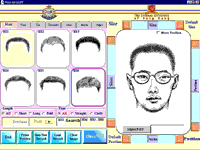
|
|
|
|
|
|
|
|
|
| The best of two artificial intelligence forms Researchers at The Chinese University of Hong Kong have been looking at how to get the best from two different forms of artificial intelligence. On one side are conventional expert computer systems which mimic human decision-making and solve problems using “if ...then” rules. They are capable of commonsense reasoning with everyday language. On the other side are neural networks which model human brain mechanisms and can identify and extract patterns and trends from sounds and other data sensed externally. While expert systems are efficient at the symbolic representation of knowledge but are inefficient at automatic knowledge acquisition and learning, neural networks have a strong capacity to learn but symbol processing is more complex. Researchers at CUHK have been developing a way of making both systems complement each other by combining them into a hybrid for use in solving real-life decision-making problems. Examples of application are the decision-making support systems needed for computerised environment assessment and management as, for example, in water pollution management, and the system support needed for computerised medical diagnosis. Principal Investigator, |
 |
||
| More technologies go into general use |
||
| An increasing number of technologies developed at The Chinese University of Hong Kong are being successfully applied for general use. An anti-crime identification system known as AICAMS which went on trial with Hong Kong police in 1997 has this year been adopted by all 52 police divisions.
Among other technologies from the university is the powerful Chinese search engine MoLi & ANSeRS® which has attracted licensees locally and internationally. Another technology, already patented in the US, greatly increases the speed of DNA sequencing, an important process in life science and medicine. A world-renowned US biotechnology company has already licensed the technology for commercial exploitation. |
